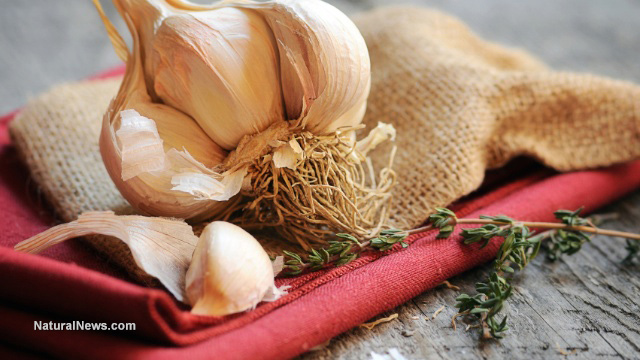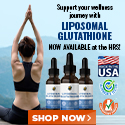Antibiotic herbs destroy drug-resistant bacteria
Monday, April 07, 2014 by: L.J. Devon, Staff Writer
Tags: antibiotic herbs, superbugs, medicinal plants

(NaturalNews) Hospitals have become a breeding ground for drug-resistant bacteria. Hiding in the shadows, strains like methicillin-resistant Staphylococcus aureus (MRSA), Clostridium difficile, carbapenem-resistant Enterobacteriaceae, and gonorrhea have become prevalent, unstoppable, infecting over 2 million Americans each year. The CDC now reports that drug-resistant bacteria claim the lives of 23,000 each year.
Prescription antibiotics work on a singular mode, are easily outsmarted by bacteria
Often perceived as the cure-all in contemporary medical communities, antibiotics are prescribed en masse each year by doctors who are taught a one-size-fits-all mentality. Prescription antibiotics work on a singular chemical mode and are easily outsmarted by bacteria strains. Allopathic doctors cling to antibiotics as savior medicine because they were never properly educated on prevention, botany and the natural antibiotic properties of herbs.The complex antibiotic qualities of plants, herbs, berries, roots and barks are more highly intelligent in and of themselves than an entire 12-year medical degree. Natural antibiotic herbs don't encourage bacteria to evolve, like prescriptions do; they destroy the highly evolved bacteria strains through multiple complex modes.
There may be a place for prescription antibiotics in extreme cases, but nine times out of ten, prescription antibiotic use could be mitigated and avoided altogether.
Why plants are the new antibiotics
Using the right combination of herbs is more powerful than any prescription antibiotic.In Stephen Harrod Buhner's book Herbal Antivirals: Natural Remedies for Emerging & Resistant Viral Infection, several reasons are listed why plants are becoming revisited as the most powerful antibacterial and antiviral medicine source.
For one, plant chemistry is highly complex, consisting of hundreds to thousands of compounds that take down bacteria from multiple angles. Single chemical prescription antibiotics allow the bacteria a chance to adapt and build resistance.
Another reason involves a plant's longevity. Plants are stronger antibiotics because they have developed sophisticated responses to bacteria over several lifetimes. Man-made antibiotics use a singular mode that has only been around for a handful of decades. In contrast, plants work together in synergy, exhibiting multiple modes of bacterial destruction.
A third reason to use plants as antibiotics is that they are practically free. An individual is self-empowered when utilizing plants, bypassing the need for a doctor's directive or prescription. Herbs can be identified, grown and harvested. Teas and tincture extracts can be made in one's own home. The complex constituents of the herbs combine to create highly potent preventive medicine that halts viruses and bacteria in their tracks.
Herbal remedies are apparently more safe to use as well and do not destroy the good microbes in the gut. While prescription antibiotics welcome drug resistant bacteria infections that kill thousands yearly, herbs promote the opposite -- life and sustainable ecology. They kill drug-resistant bacteria.
On top of all this, it does not take a decade of higher education to learn how to work with these natural plants.
Four potent plant antibiotics and other antibacterial herbs that work in synergy
In Buhner's research, four plant antibiotics are highlighted, although many exist.Cryptolepis is a broad-spectrum, systemic antibacterial, effective for taking out resistant C. diff, CRE, gonorrhea and MRSA -- all of which are pervasive now due to prescription antibiotics.
Goldenseal is one of many berberine-containing plants that is effective for nearly all drug-resistant gastrointestinal tract infections, including C. diff.
Juniper berry and cranberries are effective for nearly all resistant urinary tract infections.
Honey is becoming the United Kingdom's topical antibiotic for surgical wounds infected with resistant organisms. Check out this study and see how honey works.
Other powerful antibacterial herbs, roots and berries include but are not limited to: oregano, garlic, onions, cumin, elderberries, eucalyptus leaf, Echinacea, goldenseal root, tea tree oil, green tea, olive leaf and pau d'arco bark.
Current crises in modern healthcare and the lack of affordability thereof could routinely be solved by personal responsibility to educate and utilize plants and herbs. It is fear and lack of trust in oneself that holds individuals back from reclaiming their natural state of healthy existence.
Sources for this article include:
http://www.prweb.com
http://www.newconnexion.net
http://www.cdc.gov
Antibiotic herbs at FETCH.news
Get independent news alerts on natural cures, food lab tests, cannabis medicine, science, robotics, drones, privacy and more.
Take Action: Support Natural News by linking to this article from your website
Permalink to this article:
Embed article link: (copy HTML code below):
Reprinting this article:
Non-commercial use OK, cite NaturalNews.com with clickable link.
Follow Natural News on Facebook, Twitter, Google Plus, and Pinterest
- Newly released JFK files reveal Pentagon's role in creating Lyme disease and covid in the same lab
- DEADLY DECEPTION: How COVID vaccines increased mortality rates and why authorities hid the truth
- CDC finally halts $11 billion COVID funding scam as health officials admit the ‘pandemic’ was a fraud
- Here are TEN all-natural ways to protect your garden without using harmful chemicals
- GAIN-OF-FUNCTION CAT-BIRD-FLU now on the rise as nearly a dozen cats in Colorado "test positive" for Bird Flu due to contaminated cat food
- Ginseng's hidden anti-aging power: How compound K is rewriting the rules of skincare
- “Endgame: The Hidden Agenda 21” unveils a world of conspiracy and control
- ATTENTION PRESIDENT TRUMP: Please WITHDRAW your nomination of Dr. Susan Monarez for CDC Director as she is a VAX FANATIC and TOXIC JAB ZEALOT
- Senate Democrats deny censorship industrial complex existed, defend government's role in silencing dissent
- Scientists demand FDA withdraw mRNA COVID vaccines amid contamination and gene therapy concerns
- “The shame of Minnesota”: Somali immigrants behind $250 million child nutrition fraud in largest COVID-era scam
- L.A.'s rebuilding nightmare: Only 4 permits issued after fire destroys 6,000 homes
- Former Congresswoman exposes CCP's deep infiltration of California through universities, ports, and fentanyl
- Despite surge in MMR vaccination in Texas, measles outbreaks continue: Is VACCINE SHEDDING fueling the spread?
- PROCESSED TABLE SALT in foods found to fuel depression
- Chewing gum's dirty secret: How your daily habit could be flooding your body with microplastics
- Judicial bias exposed: Judge who blocked Trump's gang deportations attended secretive left-wing conference
- BPA: The hidden hormone disruptor sabotaging your health - and how to fight back
- Newly released JFK files reveal Pentagon's role in creating Lyme disease and covid in the same lab
- Elon Musk: Aliens could be here on Earth RIGHT NOW
- Festive flavors: The sweet history, nutritional profile and health benefits of pecan pie
- Trump reverses course on Gaza plan, says “nobody is expelling Palestinians”
- Reclaim your health: How midlife exercise reverses years of inactivity
- Big Pharma's $8 Billion bribery scheme exposed: how doctors are pushed to prescribe junk science, not heal
- Boys are back in town: Trump’s patriotic alpha crew takes the wheel while toxic females ride in the backseat
- EPA advisor admits the agency is funneling billions to climate groups ahead of Trump’s return to White House
- Space war brewing? Russia threatens to destroy Starlink satellites
- Survival 101: Effective EMF blocking techniques
- A lack of integrity in Academia: Harvard professor found GUILTY of fraudulent research to promote CRT theory
- Mike Adams Sermon 66: God will DESTROY ISRAEL for its wickedness
- 5 Simple steps to boost your brainpower: How to strengthen executive function in a distracted world
- Rep. Nancy Mace introduces bill to ban biological males from female facilities on federal property
- Sugarcane extract superior to cholesterol-lowering drugs?
- WHO focusing more on policing speech about public health and implementing global surveillance systems
- Pilots report mysterious lights 'moving at extreme speeds' across Oregon skies
- Dr. Mike Yeadon releases 15-minute testimony - WATCH - about genocidal intent of COVID “vaccines”
- EPA advisor admits the agency is funneling billions to climate groups ahead of Trump’s return to White House
- The Health Ranger releases “Vaccine Zombie” song and music video, using AI-animated zombies for the music video
- California's social media censorship law struck down: A victory for free speech or a threat to online safety?
- Dr. Mike Yeadon releases 15-minute testimony - WATCH - about genocidal intent of COVID “vaccines”
- The pandemic as a tool for INDOCTRINATION: Understanding “The Indoctrinated Brain” by Dr. Michael Nehls
- Florida takes a stand: DeSantis proposes permanent ban on mRNA vaccine mandates
- Mike Adams releases country western hit single: Goin’ Back in Time is Comin’ Home
- Mike Adams releases music poetry sensation: A Child of God
- “Why we influenced the 2020 elections”: Facebook files reveal the coordinated effort to bury the Hunter Biden laptop story
- RFK Jr. clears key hurdle: Sen. Susan Collins backs controversial HHS nominee, signaling a new era for health policy
- Unpacking the Lies That We’ve Been Fed – new song and music video released by Mike Adams, the Health Ranger
- Mike Adams releases new song and music video: Nothing More Disgusting Than a Globalist
- Newly released JFK files reveal Pentagon's role in creating Lyme disease and covid in the same lab
- Congratulations to the FULLY UNVACCINATED as you resisted the COVID-19 PROPAGANDA MACHINE fueled by over $100 BILLION
- Michigan sheriff announces criminal investigation into 2020 election crimes, Dominion Voting Systems
- Israeli soldiers accused of even more torture and abuse in the West Bank
- Migrants are taking advantage of recent hurricanes to scam residents and loot their homes
- House Intelligence Committee calls for the ARREST and PROSECUTION of Dr. Anthony Fauci
- Red Cross issues warning to stop blood plasma donations from vaccinated people
- Scientists confirm: GENIUS brain function can be spontaneously unleashed in humans without any apparent cause
- EPA advisor admits the agency is funneling billions to climate groups ahead of Trump’s return to White House
- HYSSOP: What research reveals about the health benefits of this ancient holy herb
- Two containers with completed ballots fall out of truck in Florida
- Fully vaccinated about to see “tsunami” of illness and death, warns virologist
- Global leaders unite to clamp down on “misinformation” with UN-backed Cascais Declaration
- BREAKING: 2025 NDAA authorizes mandatory military draft of WOMEN across America… as Pentagon pursues global NUCLEAR war with both Russia and China at the same time
- Michael Yon warns of a ZIONIST TAKEOVER in Trump’s second administration
- BOMBSHELL: DNA testing kits are a SCAM to develop ethnic-specific bioweapons
- Ozempic and Wegovy weight loss drugs are injectable LIZARD VENOM PEPTIDES that may unleash a devastating wave of organ failure… side effects align with symptoms of SNAKE BITES
- Israeli soldiers accused of even more torture and abuse in the West Bank
- These 13 countries just signed an agreement to engineer a global FAMINE by destroying food supply
- NASA admits that climate change occurs because of changes in Earth’s solar orbit, and NOT because of SUVs and fossil fuels
- RFK Jr. clears key hurdle: Sen. Susan Collins backs controversial HHS nominee, signaling a new era for health policy
- Sermon 30: How Jesus reveals Caesar’s FAKE CURRENCY and FALSE AUTHORITY
- Coriander seeds: Ancient medicine backed by modern science
- Arizona officials claim Maricopa County needs 10-13 days to tabulate results of the election
Science News & Studies
Medicine News and Information
Food News & Studies
Health News & Studies
Herbs News & Information
Pollution News & Studies
Cancer News & Studies
Climate News & Studies
Survival News & Information
Gear News & Information
News covering technology, stocks, hackers, and more



"Big Tech and mainstream media are constantly trying to silence the independent voices that dare to bring you the truth about toxic food ingredients, dangerous medications and the failed, fraudulent science of the profit-driven medical establishment.
Email is one of the best ways to make sure you stay informed, without the censorship of the tech giants (Google, Apple, Facebook, Twitter, YouTube, etc.). Stay informed and you'll even likely learn information that may help save your own life."
–The Health Ranger, Mike Adams












































